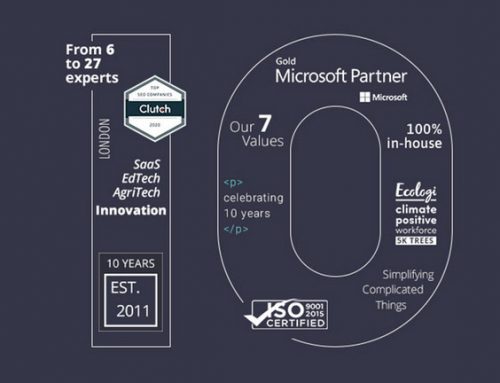MVP – Minimum Viable Product – is a buzzword that you’ll hear reverberating in software circles. But what exactly does it mean? Why is it crucial to the success of a software launch and why are start-ups so obsessed with getting MVP development right?
This easy to follow guide will shed light on everything from the difference between MVP software development and POC, lean methodology and analytics to determining value and knowing which tools to use.
Before we get stuck in though, let’s get a grip on what an MVP, POC and Prototype are.
MVP, POC and Prototype – what’s the difference?
To clear up any confusion we need to define MVP, POC and Prototype with a textbook definition of each:
- MVP – “Minimum Viable Product” is a fully functioning version of a product with just the crucial functionality to be usable by early customers who can then provide feedback for future product development. MVP makes launching software quicker and more economical.
- POC – “Proof of Concept” is where you test certain assumptions to work out whether an idea is feasible, prove if it can be turned into a reality and determine the best, most cost-effective way of doing so. It’s also useful for showing financial viability, persuading stakeholders looking for seed funding.
- Prototype – a prototype shows how a product can be developed. It’s like a first draft that shows how the product will finally look and feel. Prototypes are cost-effective and great for rapidly testing and flushing out any errors from final users. Using user feedback, you can then tweak or rework the prototype to improve it.
When we develop software, MVP is something we consider extremely carefully and discuss in-depth with our software clients. It’s what will initially define your software and will have a big influence on its success.
Interestingly, the concept of MVP took off after Eric Ries described it in his book the Lean Start Up back in 2009.
The Lean Methodology
Now we have a clear MVP definition, let’s look at The Lean Methodology. This is a way of life for our software and app developers. The principles of lean, if adhered to, make the development process faster, more economical and increase the likelihood of delivering high quality software that customers love. Here are the 7 principles that define the lean process.
- Eliminate Waste – If a piece of code or functionality doesn’t add value to the customer, don’t include it. Also, if you make things unnecessarily complex, or the brief is constantly changing, it will delay the development process.
- Build Quality In – ensuring quality is everyone’s job. By combining the skills and experience of one or more designer or engineer, you will get a better result. Set criteria for code before writing a single line then react to feedback and refine.
- Create Knowledge – having an experienced team with specialist knowledge to develop your software is essential, however, you need to be disciplined, too. Reviewing code, documenting development, sharing knowledge and proper training are all useful tools.
- Defer Commitment – a plan is great but not one that is excessively detailed and is set in stone months in advance. The team should be constantly collecting and analyzing information regarding any important decisions.
- Deliver Fast – projects shouldn’t be rushed, but if you want to develop software quickly, try to solve any issues that might slow development down. For example, solve any blocks quickly, don’t over-engineer things and keep it simple.
- Respect for People – if a team and client treat each other with respect, then it shows in the final result. Communicating well, not working ridiculous hours, talking things through and empowering each other make a big difference.
- Optimise the Whole – creating as much value as possible, as quickly as possible, means that everything involved in the design, production, and delivery has to be optimised.
Not just for start-ups
Minimum Viable Product can give you a better understanding about your customers’ interest in your product without actually fully developing it. This first version of your product will demonstrate its minimum feature before investing in full blown development. Building it step by step, you’ll learn as you go, gather feedback, enhance and then achieve more functional, reliable and usable and software that really resonates with your target audience.
Whilst many people associate MVP with start-ups, established companies can use MVP to launch new products and all clients can benefit in many different ways, including:
- Low Risk, High ROI – MVP development is low-risk way of getting your product to market and often delivers a potentially high return on your investment.
- Fast and Economical – MVP software development can save you considerable time and money, which is great if you want to be first to market with a unique idea. This money can then be reinvested back into future development of the software once you have user feedback.
- Capture Early Adopters – by targeting your MVP at early adopters and influencers, they’ll talk passionately about your product, provide feedback and even promote to their friends and followers.
Determining value within your product or offering
We believe in Lean Methodology and with this lean process, the value of the product is defined by the features that a user gains benefit from. Until we launch a platform as an MVP, we don’t actually know precisely who the users will be, how they’ll interact with the platform and what they will find valuable.
This is why the post MVP refinement phase is vitally important. It’s where we get to fully understand what is actually of value to users.
How to achieve product market fit?
Product market fit simply means being in a good market with a product that can satisfy that market. Again, the Lean Product Process helps us achieve this together with the client.
Identify your target customer – the creation of user personas enable us to segment the target and audience and determine who our target users are.
Understand customer needs – by interviewing customers, reading negative competitor reviews and conducting UX questionnaires you’ll discover identify unfulfilled customer needs.
Pin down your value proposition – put down in writing, in as short a way as possible, what key benefit your MVP will bring. This is your value proposition. Example: InVision – better design collaboration.
Set your MVP features – starting with your value proposition, add just enough features that will keep your software viable and capable of meeting your customer needs.
Develop an MVP prototype – by building a prototype of your product, say an app, mock up screens enable you to you can see how it feels and works. You can then refine it before going into full development.
Live test the MVP – hand your final MVP to your customers. See how they react to and engage with it. Listen carefully to their feedback and determine whether it solves their problems.
The post MVP refinement phase is a crucial one. It allows us to understand what users determine as value. It enables us to measure, learn and refine the finished product, with the aim of constantly evolving the platform and improving the offering to the main user base and beyond.
User testing, research, insight and what tools to use
Once the MVP has been launched, we start to measure and collect user data using powerful tools to better understand user behaviour through this data. These include:
Microsoft Clarity – a session replay and heatmap tool that shows how visitors click, move, scroll, browse and pay attention on websites.
Google Analytics – a website traffic analysis application that provides real-time statistics and analysis of user interaction with the website.
We then use the learnings from this data to consult with you on the elements of the MVP which need refinement. We’ll also help you decide which features and functionality you should consider building during this phase and future development phases.
The most agile and transparent approach to this process is through one of our Managed Services Contracts, which gives you dedicated time locked in each month for this work. Amongst other benefits you will have full control of how your time is used, access to the product backlog and Project Management, design, engineering and testing on tap.
Lean analytics
An extension of the Lean Startup approach, Lean Analytics is the last part of the lean process. It’s used to measure progress, enabling you to ask the most important questions and get definitive answers fast.
Lean Analytics is the measuring tool for the Lean Start Up Cycle of Build > Measure> Learn. So what Lean Analytics metrics might we use to gauge success and reaction to your software or app? Here are some of the key ones, however it is essential that you focus on the ones most important to your MVP and its particular stage of growth:
Empathy – use interviews, surveys, qualitative results and quantitative scoring.
Stickiness – measure downloads, churn and virality.
Virality – word of mouth, app ratings and customer acquisition cost.
Revenue – customer lifetime value and average revenue per daily active user.
Scale – spinoffs and publishers.
MVP development project on the horizon?
Let’s chat! We always start with a free, no-obligation fixed price quote. Call us on +44 (0) 20 3855 0690 or fill out our website form here.



